To solve the problem of hot water in an apartment or a private house, in a cottage, you can heat water with the help of electric water heaters. There are several types and to decide which water heater is better for your situation you need to know their advantages, disadvantages and features of each type of equipment for heating water.
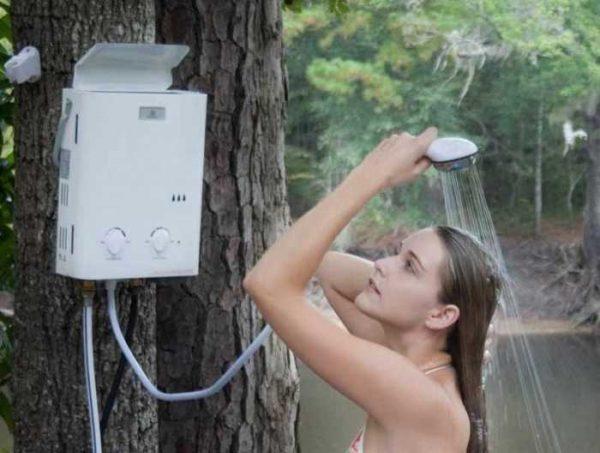
A cikk tartalma
What are household water heaters and how do they differ?
First of all, water heaters are distinguished by the principle of operation. They are:
- flowing type – heats the water passing through the device;
- accumulative type – heats the water in the tank of the heater;
- flow-accumulative – have two modes of operation;
- pouring.
What water heater is better to say is difficult. If we talk about appearance, the main external difference is the size. Accumulative models are large, flow-through models are small. But the size is not all that is needed to understand what is better for you. It is necessary to know the advantages and disadvantages of each type of equipment.
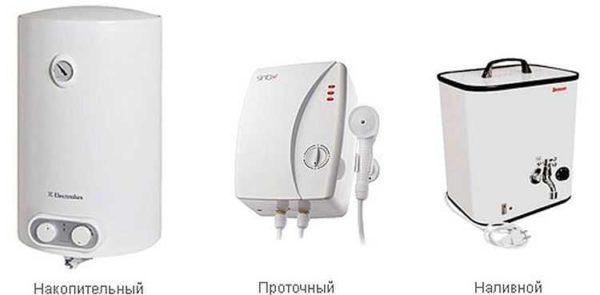
Accumulation models
Accumulative water heater (second name – boiler) has a solid-sized container – from 30 to 200 liters. Inside there is a heating element – TEN. It can be one or several. Included TENs can be in parallel (always work simultaneously) or cascades (included as necessary). With cascade inclusion there are several modes of heating – for more rational use of electricity.
Many models also contain a thermometer for easy control of water temperature and a thermostat to maintain the set temperature. The desired temperature is set by turning the thermostat control knob to a certain position.
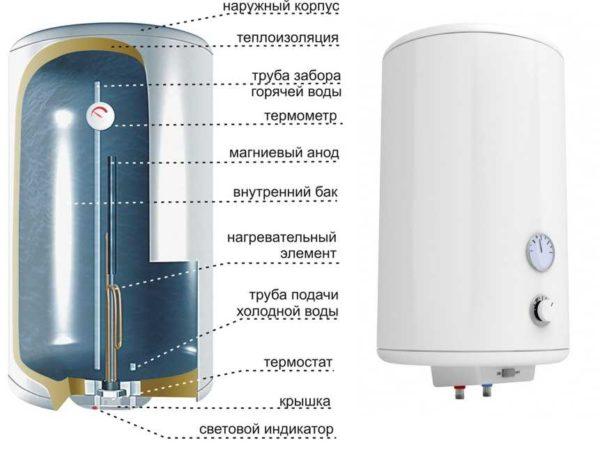
In a storage heater there is a certain volume of water in the tank at all times. It is heated with the help of electric heaters. They are of two types:
- TEN(TubularElectric Heater). Inexpensive, classic solution. They are quick and easy to change, in any specialized store is available in a wide range. The disadvantage is that they take quite a long time to heat water.
- Spiral heating element. More powerful heaters that quickly warm large volumes of water, allow you to accurately maintain the desired temperature. But they are more expensive (affects the price of the water heater), also more difficult to replace.
Működési elv
Regardless of the type of heater installed, the principle of operation of the storage water heater is the same. When the set temperature is reached, the thermostat disconnects the power supply, heating stops. Further temperature maintenance occurs in automatic mode. When the water cools down by 1 degree or cold water is added to the tank during consumption, heating is turned on. As soon as the set temperature is reached (or rather – one degree above the set temperature), heating stops. This is how storage water heaters with automation work. They are convenient because they do not overheat (if the automation is in good working order) and you always have hot water, which is heated the way you wanted. Such equipment usually has two modes of operation – with temperature maintenance or without – in manual mode.
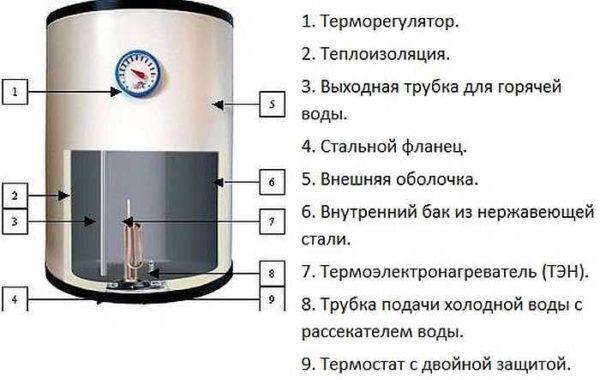
To keep the water temperature as long as possible, insulation is used. It is placed between the walls of the tank and the casing. With good thermal insulation, even with hot water, the body remains cold, maybe slightly warm. Obviously, if the temperature is maintained for a long time, the cost of maintaining it is low. Even if you turn off the temperature maintenance function, the water will be hot even after 24 hours.
There are quite simple electric water heaters, in which there is no thermostat. They are turned on/off with a toggle switch – manually. As you understand, in this case, there is a possibility that the water heater will boil and fail (if you forget to turn it off).
There is another nuance – the staggered inclusion of heating elements. They are usually installed in the body two or more, also make several modes of heating. One – more powerful, in which all heaters are included, the rest are softer – one or two TENS can work, depending on their total number. What is it for? In summer, you can use heating gentle mode – the water and so quickly heated, in winter usually use all heaters – less to wait. And in general, you can regulate the heating speed of the boiler in this way. All the hot water was drained and the next batch is needed quickly – turned on at full power, there is no such need – you can not overload the network by turning on half-power.
Where you can install a storage water heater read here.
What materials are used to make tanks and the peculiarities of their maintenance
Tanks of storage water heaters are made of stainless steel and ordinary steel. Ordinary steel is covered with protective layers of enamel, stainless steel does not need them. From this point of view, it is easy to say which water heater is better – with a tank made of stainless steel. But it is also more expensive. But the service life of such equipment is much longer – enamel, even the most qualitative, eventually flakes off.
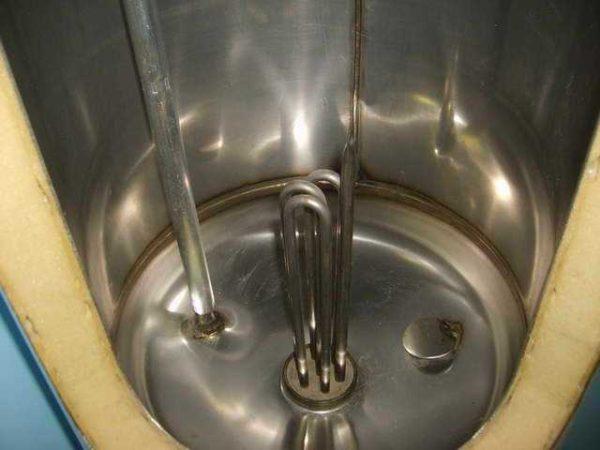
To extend the service life of the enamel coating, magnesium anodes are put in steel storage water heaters. They require periodic replacement – they “melt” during operation, and their condition is monitored by a special sensor with an indicator on the front panel. By the state of the indicator monitor the need to replace the anode.
How to install a boiler (storage water heater) with your own hands, see here.
How to choose and which one is better
In most cases, storage water heaters are put in private houses or in the apartments of multi-storey buildings, where there is no centralized supply of hot water. The equipment is selected by the volume of the tank. If you do not like restrictions, you can count from the calculation of 50 liters of hot water for one family member. This should be enough. In the tank, it heats up, say, to 70 °. It is unrealistic to use it, you will dilute it. As a result, there will be 100-150 liters of warm water per person (depending on the temperature of water in the water supply). This is without taking into account the fact that during the consumption of water is also heated.
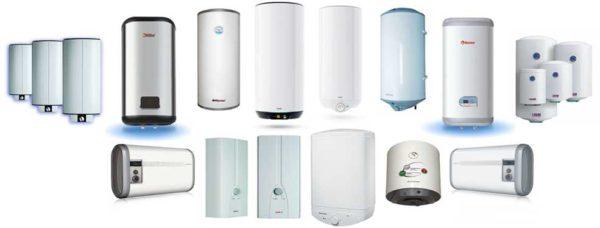
About the material of tanks, everything is clear: there is an opportunity, it is better to take a cumulative electric water heater with a stainless steel tank. The number of operating modes is not so critical, but it is also a good option, although such models because of the more complex scheme, cost more.
| Név | Tank capacity | Teljesítmény | Dimensions (W*H*H) | Fűtési idő | Tank | Min/max pressure | Control | Ár |
|---|---|---|---|---|---|---|---|---|
| Electrolux EWH 50 Centurio DL | 50 л | 433*255*860 mm | 70 min | stainless steel | 0.7-6 bar | electronic | 190$ | |
| Ariston ABS VLS Evo PW 100 | 100 л | 2,5 kW | 506*275*1250 mm | 91 min | stainless steel | 0,2-6 bar | electronic | 185$ |
| Atlantic Vertigo 30 | 30 л | 1 kW | 490*290*601 mm | 46 min | enamel | 0,5-6 bar | mechanical | 240$ |
| Thermex Flat Plus IF 80 V | 80 л | 1,3 kW | 493*270*1025 mm | 80 min | stainless steel | electronic | 300$ | |
| Zanussi Smalto ZWH/S 50 | 50 л | 2 kW | 470*250*860 mm | 95 min | enamel | 0,75-6 bar | mechanical | 180$ |
| Gorenje OTG50SLB6 | 50 л | 2 kW | 420*445*690 mm | 115 min | enamel | 0,75-6 bar | electronic | 155$ |
About what firm is better to choose. What water heater is better objectively no one can tell you objectively – different needs and demands of people. But here you can make some conclusions on the experience of operation. People speak well of accumulative heaters firms:
- Termex. If we talk about prices for water heaters with a tank of stainless steel, then at the price of this company has no competitors. It is difficult to say about the quality, reviews are different.
- Real. Not bad storage boilers, the main thing is that the consumables in your city were.
- OSO. Very good, but expensive.
- Electrolux (AEG). A well-known company with stable quality.
Flow water heaters
The flow-through water heater has more modest dimensions. It is a small box that is attached to the wall. Inside, too, there is a tank with a heating element, but their size is very tiny, and the heating elements are usually in the form of a spiral – to better heat the passing water.
One of the necessary elements is a flow sensor. It monitors the appearance of water movement in the device (the faucet is opened) and gives a command to turn on the TEN. When the faucet is closed, the flow sensor disconnects the power supply.
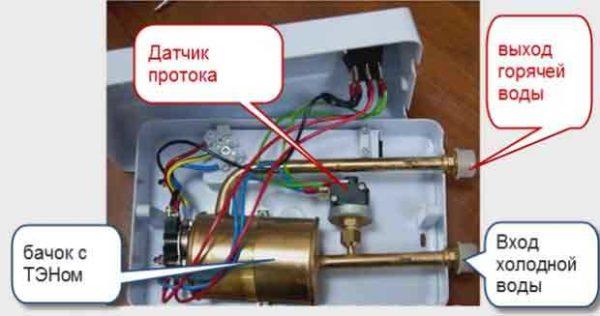
There is also a thermostat, which sets the water temperature. It can be of the rotary type with a scale, there are models with an electronic display with push-button or touch control.
Pressure and non-pressure flow water heaters, their connection
There are two variants of flow water heaters – system and individual. The system ones are connected to the cold and hot water risers and are also called pressurized. They can provide several points at once – for example, shower, sink and washbasin. There are system flow water heaters for 220 V with a relatively small power consumption (about 8-9 kW), but they can heat a small amount of water. There are installations very powerful – up to 32 kW, but they are three-phase – on 380 V.
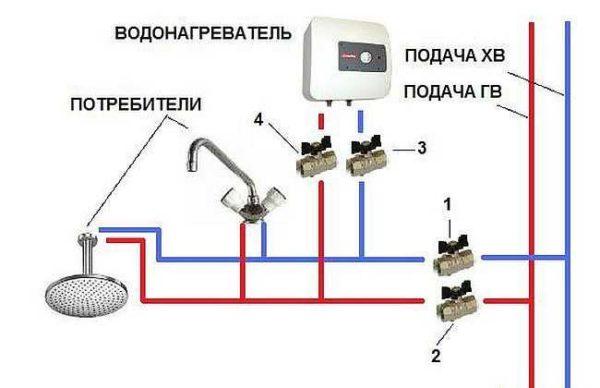
Pressure flow water heaters have two large classes.
Individual flow water heaters – non-pressurized – are connected to cold water. They have a flexible hose with a nozzle or, alternatively, a faucet at the outlet – for washing. These devices are good for the period of DHW shutdown or as a solution to the problem of hot water in the dacha.
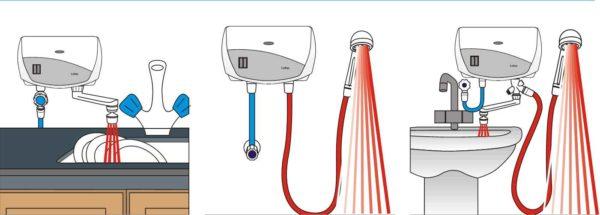
Note, the stopcock is only on the supply and it is possible to close the hot water only with its help. Connecting the shut-off valve on the outlet will sooner or later lead to the rupture of the cistern, in which the water is heated. This happens when the automation for water shutoff does not work. And it is not designed to track the flow of water, and monitors only its appearance / loss at the inlet. So sooner or later the failure happens.
When connecting the pressurized and non-pressurized version, grounding is mandatory. And in general, it is desirable to draw a separate power supply line to such penetrations – high power consumption, the combination of water and electricity – an unsafe combination. Ordinary wiring may not be able to withstand. Therefore, a separate line is required from the electrical box, on which there is a circuit breaker and RCD.
Why you need a safety valve for a water heater read here.
Type of control
There are two types of control of flow-type water heaters:
- Hydraulic. When at the inlet there is a flow sensor (the first photo in the section), on the signal of which turns on/off the heating element. The disadvantage of such a system is that it is always turned on at one power. Some models have several modes of power, but they must be changed each time forcibly (press the buttons).
- Electronic. The work is controlled by a microprocessor, which monitors the state of the device with the help of several sensors. These systems allow you to maintain the required temperature.
Flow-through water heaters with hydraulic control can only add a certain number of degrees to the water temperature. How much exactly depends on the power of the heating element, but on average it’s about 20-25°C. This means that in summer you will get quite warm water at the outlet – about +40°C, and in winter it will be only slightly warmer than +20°C, as the incoming is very cold and heat the device to higher temperatures is simply not able to.
More powerful models – system models, with the prefix Sistem – have electronic control and can cope with the task of maintaining the set temperature. Their disadvantage is that they require more power and cost more. But if you have such an opportunity, the automation will maintain a constant (set by you) temperature at any time of the year. At full power, the installation rarely works, but it is still required to pull the power line at maximum capacity and on the same to calculate the automatic device and RCD.
What are flow heaters made of
The internal stuffing can be:
- Of copper. These models are distinguished by very good characteristics – quickly heat water. Copper has a high thermal conductivity, quickly transfers heat.
- Stainless steel. Not a bad option, durable (if the water is not hard).
- From plastic. The cheapest and not the most durable. Although the plastic is used special, it is better not to buy such flow heaters.
The choice of flow water heater on this feature is obvious. If possible, buy with copper “stuffing”, but also stainless work quite well.
Pull power with copper wire cross-section of at least 3.5 mm (with consumed power up to 7 kW) and 4 mm – up to 12 kW. According to the value of the current consumption select the automatic machine, RCD take a step higher with a leakage current of 10 mA. With this method of connection and normally working grounding will not be a problem.
A választás jellemzői
When choosing a flow water heater should be guided by several indicators:
All these parameters should be in the description. Having picked up several models you can then, according to reviews, or based on technical characteristics, decide which water heater is better. If we talk about firms, then better quality German and Italian devices. With Chinese – as luck would have it, although many firms have moved production to China. And now most of the household appliances have a double “citizenship” – they usually write – the birthplace of the brand and the place of production. Most of this equipment works reliably, as firms value the name and introduce strict control over the quality of products.
| Név | Teljesítmény | Méretek | Productivity | Number of points | Control type | Üzemi nyomás | Ár |
|---|---|---|---|---|---|---|---|
| Thermex System 800 | 8 kW | 270*95*170 mm | 6 l/min | 1-3 | hydraulic | 0,5-6 bar | 73$ |
| Electrolux Smartfix 2.0 TS (6.5 kW) | 6,5 kW | 270*135*100 mm | 3.7 l/min | 1 | hydraulic | 0,7-6 bar | 45$ |
| AEG RMC 75 | 7,5 kW | 200*106*360 mm | 1-3 | electronic | 0,5-10 BAR | 230$ | |
| Stiebel Eltron DHM 3 | 3 kW | 190*82*143 mm | 3,7 l/min | 1-3 | hydraulic | 6 Bar | 290$ |
| Evan B1 – 9,45 | 9,45 kW | 260*190*705 mm | 3,83 l/min | 1 | mechanical | 0.49-5.88 bar | 240$ |
| Electrolux NPX 8 Flow Active | 8,8 kW | 226*88*370 mm | 4,2 l/min | 1-3 | electronic | 0,7-6 bar | 220$ |
Specific models
There are flow water heaters in non-standard formats. The most common is a faucet with a flowing water heater. This is an interesting option for the dacha, for example, but as with the repairability of things is difficult to say – so far there are not very many users of such devices and the experience of operation is quite small.
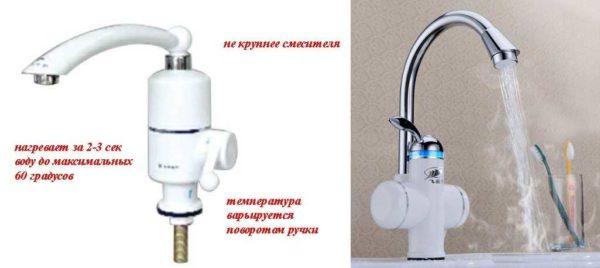
Which water heater is better: flow or accumulation
To decide which water heater to buy – boiler (accumulative) or flow – in principle, it is not difficult. First of all, the limiting factor is the consumed power: at the accumulative maximum it is 3-4 kW, at flow water heaters less than 7-8 kW to take pointless – they can provide heating only a very small volume of water. Not everyone has the opportunity to install such powerful equipment.
In the second place, you should look at whether you will constantly use the electric water heater or only periodically. With periodic use, especially in the summer period convenient flow water heaters, so and open type (individual, which are installed next to the sink). For example, this is a great way to heat water in the summer shower at the cottage to a comfortable temperature, if the sun with this task did not cope. It is also a way to solve the problem in apartments when the hot water supply is cut off for repairs.
For constant and regular use, accumulation water heaters are more economical and convenient. Modern models more than a day “keep” the temperature, so that the electricity consumption here will be rather less than more.
Flow-storage water heaters
This is a combination of the two previously described devices. They work in two modes. If the water consumption is small, water is supplied from the storage tank, if it increases, the flow heating is also connected. The equipment is very convenient, but it is expensive. There are not so many options. This is Stiebel Eltron SHD for 30 liters and 100 liters. The price is 1500-1750$.
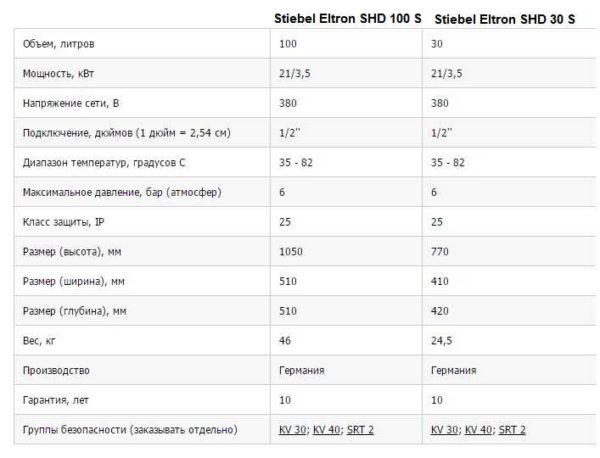
Bulk water heaters
An excellent solution for summer cottages or in case of absence of tap water in the house. Bulk water heater is a tank with a lid, in which the heating element is mounted. The tank can be made of stainless steel, plastic, ordinary steel covered with enamel. The temperature is regulated by a thermoregulator. A shower hose is attached to the body.
There are such devices of two types – gravity and with the pressure created by a small built-in pump (Elvin EVBO). Self-flowing pressure water heaters should be hung above the head. It is possible to take a shower, then the water flow will be weak. Models with a pump have more pressure, but the capacity of the tank should be decent and hiking such a model can not be called.
Functions here can be such:
Bulk water heaters – this is a native Russian invention and the manufacturers are all Russian. There are similar eletkronanagator water heaters of the following brands:
- Uspekh;
- Elvin Evbo;
- Vodolei;
- Elbat;
- Mr. Heath Dachnik;
- Tale.
Devices operate from a 220 V network, the power has about 1-2 kW, the price – from 20$ to 100$ – depending on the functionality and material of the tank. What kind of water heater is better in this category? Stainless with pressure, but these are just the most expensive models.

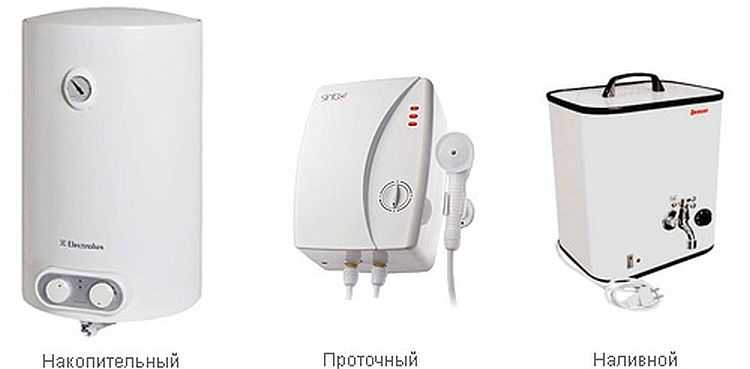
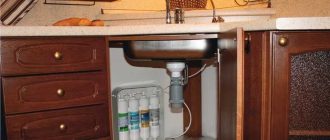
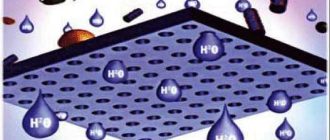
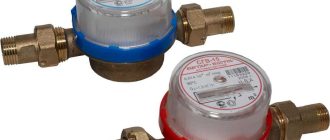
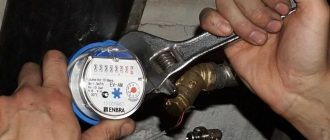
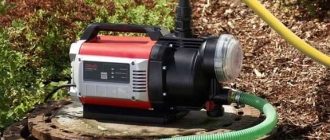
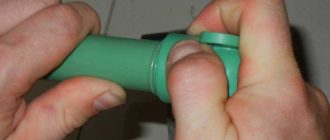
Choosing a water heater can be tricky, but I recently found one that totally changed my morning routine! It heats up super fast, and I never run out of hot water. Seriously, it’s a game-changer for those chilly winter showers. Great tips in the article! Thanks!